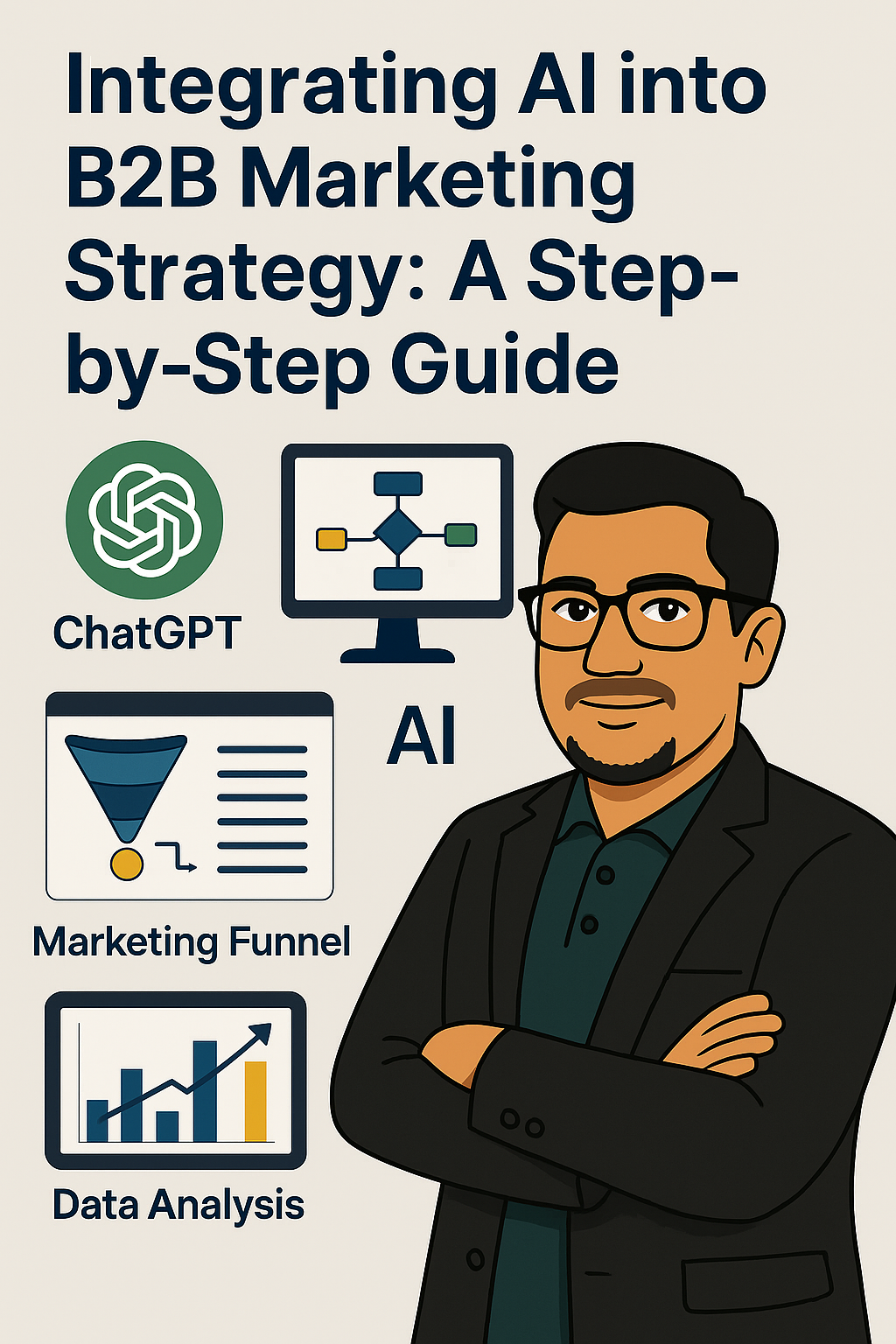Integrating AI into B2B Marketing Strategy: A Step-by-Step Guide
June 4, 2025
By Asif Ikbal Bhuiya
In B2B marketing, there’s a lot to follow: long sales cycles, complex buying journeys, and region-specific regulations. For me, AI isn’t just about writing content or chasing trends — it’s about staying on track, making better decisions, and staying aligned with sales.
AI helps my team summarize the past, analyze the present, and act smarter for the future — especially when the funnel has many steps and stakeholders. Here’s exactly how we do it.
🧠 What AI in B2B Marketing Means to Me
I see AI as a support agent — not the creative, not the strategist, but the one who keeps us focused.
In our daily operations, AI helps us:
- Track and summarize customer journeys
- Generate structured content and campaign ideas
- Automate nurturing flows
- Align more closely with sales by sharing context
- Follow up faster — with relevance
It’s not about replacing our voice — it’s about making sure we don’t lose it in the noise.
🎯 Where We Use AI Across the Funnel
We don’t just use AI at the “top” of the funnel — it supports us at every step, like a silent team member.
1. Awareness
We use ChatGPT to build content outlines and repurpose ideas. It’s like a strategic assistant that never sleeps.
2. Engagement
Email subject lines, social captions, visual prompts — all AI-assisted. Not to replace human creativity, but to test faster and reach the audience sooner.
3. Lead Nurturing
This is where HubSpot AI shines. Smart workflows, automated follow-ups, and persona-based triggers help us move faster — and more personally.
4. Conversion & Handover
Our leads don’t just stay in marketing. When we qualify them, we pass them to sales — and our Caesar CRM keeps them aligned with ERP and real pipeline processes.
5. Feedback Loop
We use Looker Studio and Matomo for campaign performance. Matomo gives us cookie-less insights, and Looker lets us see the full journey clearly.
🧰 AI Tools We Use (And How)
We didn’t adopt every tool on Day 1 — but here’s what our team uses today:
✅ HubSpot AI
Everyone on the team is HubSpot-proficient. AI helps us:
- Suggest workflow improvements
- Discover insights on contact activity
- Optimize reports
- Plan smarter nurture flows
✅ ChatGPT
Our content assistant. It helps:
- Organize thoughts
- Restructure long-form blogs
- Repurpose ideas into new formats
- Maintain alignment with buyer personas
✅ Microsoft Copilot
Because our company approved it, we use it for:
- Secure work: emails, PowerPoints, and internal summaries
- Fast internal documentation
- Structuring sensitive strategic content
✅ Looker Studio & Matomo
We believe in dual tracking.
- Looker → visualizes customer journey data
- Matomo → cookie-less tracking that’s GDPR-safe and reliable
⚠️ The Challenges We Faced
We didn’t go from zero to AI overnight. There were bumps:
- Mindset resistance: “Will it replace my job?” — We had to reframe it.
- GDPR worries: We made sure AI doesn’t mean careless data handling.
- Too fast, too soon: Some people wanted 10 workflows in week 1. It took leadership to slow things down.
Today, we’re confident — but we’re still evolving.
🧭 Final Thought: Start Small. Stay Human.
AI is not magic — but it is powerful when applied right.
You don’t have to automate everything.
You just need to know what not to automate.
My advice?
🔹 Start small.
🔹 Build your own use case library.
🔹 And stay focused on strategy — because AI still needs leadership.
📩 Want help mapping or modernizing your stack?
You can:
- 👉 See how I approach digital transformation
- 📧 Email me at [email protected]
- 🔗 Or connect on LinkedIn
📚 Want more insights like this? Explore my full blog archive for more practical strategy tips.
